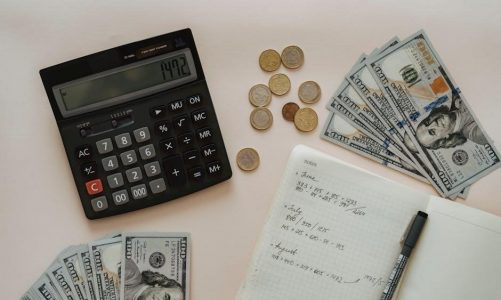The balance sheet is a fundamental financial document providing a snapshot of a company’s financial position at a specific point in time. It details assets, liabilities, and equity, offering insights into a company’s financial health and helping stakeholders make informed decisions.
1.1 Understanding the Purpose and Importance
The balance sheet is a critical tool for assessing a company’s financial health and making informed business decisions. It provides a snapshot of a company’s financial position at a specific point in time, detailing assets, liabilities, and equity. This document is essential for stakeholders, including investors, creditors, and management, to evaluate performance, liquidity, and long-term sustainability. By analyzing the balance sheet, users can identify trends, assess risk, and make strategic decisions. It also ensures transparency and compliance with accounting standards, aiding in financial planning and resource allocation. Understanding the balance sheet is vital for anyone involved in business finance.
1.2 Overview of the Three Main Sections: Assets, Liabilities, and Equity
A balance sheet is divided into three primary sections: assets, liabilities, and equity. Assets represent resources owned or controlled by the company, such as cash, inventory, and property. Liabilities are obligations the company must settle, including debts and accounts payable. Equity reflects the shareholders’ claim on assets after liabilities are deducted, encompassing retained earnings and share capital. Together, these sections provide a comprehensive view of a company’s financial standing, ensuring accountability and transparency. Understanding these components is essential for accurately interpreting the balance sheet and making informed financial decisions.

Structure of a Balance Sheet
The balance sheet is organized into three main categories: assets, liabilities, and equity. Assets are listed on the left or top, liabilities in the middle, and equity at the bottom or right. This structure ensures clarity and allows for easy comparison of a company’s resources and obligations, providing a clear financial snapshot.
2.1 Assets: Current and Non-Current
Assets are categorized into current and non-current based on their expected lifespan and liquidity. Current assets, such as cash, accounts receivable, and inventory, are expected to be converted into cash within one year. Non-current assets, like property, plant, and equipment (PP&E), are long-term resources used for operations. Understanding this classification helps in assessing a company’s liquidity and long-term investment in growth. Proper identification of these categories is crucial for accurate financial reporting and analysis, ensuring stakeholders can evaluate the company’s short-term stability and long-term sustainability effectively. This distinction is vital for interpreting financial health accurately.
2.2 Liabilities: Current and Non-Current
Liabilities are obligations a company must settle, categorized into current and non-current. Current liabilities, such as accounts payable and short-term debt, are due within one year. They indicate immediate financial commitments. Non-current liabilities, like long-term loans and deferred tax liabilities, are due beyond one year, reflecting long-term financial obligations. Accurately classifying these helps assess a company’s short-term liquidity and long-term debt burden. Understanding liabilities is essential for evaluating a company’s financial stability and solvency, as excessive liabilities can signal potential risks. Proper categorization ensures transparent financial reporting and helps stakeholders make informed decisions about the company’s financial health and future viability.
2.3 Equity: Shareholders’ Claim on Assets
Equity represents shareholders’ residual claim on company assets after liabilities are deducted. It includes share capital, retained earnings, and other reserves. Share capital reflects funds raised from issuing shares, while retained earnings are profits reinvested in the business. Equity provides a cushion against losses and is crucial for assessing ownership value. A strong equity position indicates financial stability, while a weak one may signal vulnerability. Analyzing equity helps stakeholders evaluate the company’s ability to sustain growth and withstand financial challenges, making it a critical component of the balance sheet for understanding long-term viability and shareholder value.

The Balance Sheet Equation
The balance sheet equation is Assets = Liabilities + Equity, reflecting a company’s resources and obligations. It ensures financial stability and proper accounting of ownership claims.
3.1 Assets = Liabilities + Equity
The balance sheet equation, Assets = Liabilities + Equity, is fundamental. Assets are resources owned by the company, while liabilities are its debts. Equity represents shareholders’ claims. This equation ensures balance, showing that assets are financed by liabilities and equity. It underscores the company’s financial structure and stability. Proper understanding of this equation is crucial for analyzing the balance sheet and assessing financial health. Each component must align, reflecting accurate accounting and ownership claims.
3.2 Interpreting the Equation for Financial Health
Interpreting the balance sheet equation helps assess financial health. A higher proportion of equity compared to liabilities indicates stronger financial stability, as it shows ownership-funded assets. Conversely, excessive liabilities may signal debt reliance, potentially risking solvency. The equation reveals how assets are financed and whether the company can meet obligations. Analyzing trends in the equation over time provides insights into improving or declining financial health. A balanced mix of equity and liabilities is crucial for sustainability. Understanding this equation is key to evaluating a company’s ability to grow and withstand financial challenges.

Key Components to Focus On
Focus on current assets, long-term investments, short-term liabilities, and equity components like retained earnings. These elements provide insights into liquidity, solvency, and ownership claims, guiding financial decisions.
4.1 Current Assets and Their Significance
Current assets are resources expected to be converted into cash within one year or one business cycle. They include cash, accounts receivable, inventory, and prepaid expenses. These assets are crucial for assessing a company’s liquidity and ability to meet short-term obligations. Analyzing current assets helps determine operational efficiency and cash flow potential. A strong current asset position indicates a company’s readiness to cover immediate liabilities and invest in growth opportunities. Understanding these assets is essential for evaluating a firm’s financial stability and readiness to address short-term challenges effectively.
4.2 Long-Term Assets and Their Role
Long-term assets represent resources expected to benefit a company beyond one year. These include property, plant, and equipment (PP&E), intangible assets, and investments. They are crucial for sustaining long-term operations and growth. PP&E, such as buildings and machinery, are physical resources used in production. Intangible assets, like patents and goodwill, provide competitive advantages. Investments in subsidiaries or joint ventures also fall under this category. Analyzing long-term assets helps assess a company’s capital structure and future growth potential. They are essential for evaluating a firm’s ability to generate revenue and maintain operations over an extended period.
4.3 Liabilities: Short-Term and Long-Term Obligations
Liabilities are a company’s financial obligations, divided into short-term and long-term categories. Short-term liabilities, such as accounts payable and accrued expenses, are due within one year. Long-term liabilities, like loans and bonds, are due beyond one year. Understanding these obligations is crucial for assessing a company’s financial health and solvency. Short-term liabilities indicate immediate cash flow needs, while long-term liabilities reflect long-term financial commitments. Analyzing both helps evaluate a company’s ability to meet its obligations and maintain financial stability. Proper management of liabilities is essential for ensuring liquidity and solvency.
4.4 Equity: Retained Earnings and Share Capital
Equity represents shareholders’ claim on assets, comprising retained earnings and share capital. Share capital is the amount invested by shareholders, while retained earnings are profits reinvested in the business. Equity reflects the company’s net worth and ownership stake. Retained earnings indicate financial performance over time, while share capital shows initial investments. Together, they provide insights into the company’s growth and financial stability. Analyzing equity helps assess the company’s ability to fund operations and expand without debt. It is a critical component for evaluating a company’s value and shareholder returns. Equity is essential for understanding a company’s long-term health.

Analyzing the Balance Sheet
Analyzing the balance sheet involves identifying trends, calculating key ratios, and reviewing red flags to assess a company’s financial health and make informed decisions.
5.1 Calculating Key Ratios
Calculating key ratios from the balance sheet helps assess a company’s financial health. The current ratio (current assets / current liabilities) measures liquidity. The debt-to-equity ratio (total liabilities / equity) evaluates leverage. The return on equity (net income / equity) measures profitability. These ratios provide insights into a company’s ability to meet obligations, manage debt, and generate returns for shareholders. By analyzing these metrics, stakeholders can make informed decisions about the company’s financial stability and performance. Regularly reviewing these ratios helps identify trends and potential red flags in financial health.
5.2 Identifying Trends and Red Flags

Analyzing trends and red flags on a balance sheet helps identify a company’s financial health over time. Increasing assets or declining liabilities may indicate positive growth, while rising debt or falling equity could signal financial strain. Look for unusual patterns, such as consistent cash shortages or rapid asset depreciation. Negative equity or excessive leverage are major red flags. Comparing multiple periods reveals trends, while sudden changes warrant further investigation. Identifying these indicators helps stakeholders assess risks and opportunities, ensuring informed decision-making about the company’s stability and future prospects.



